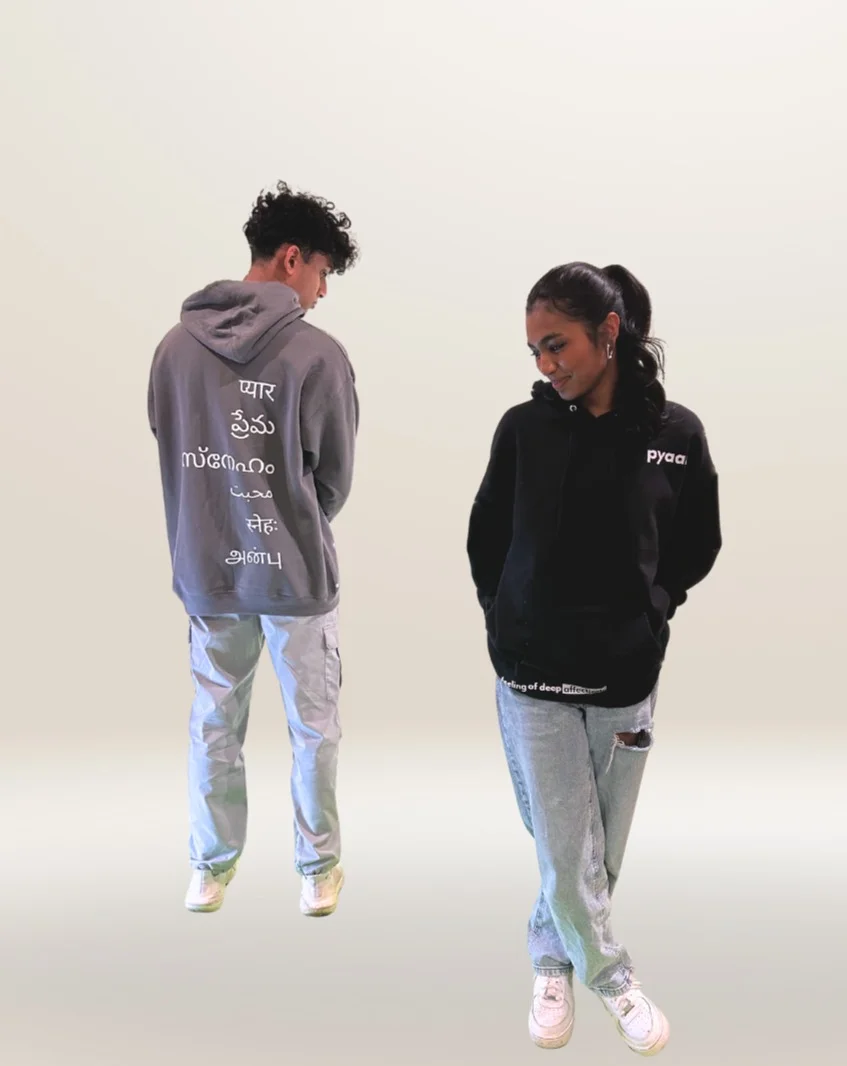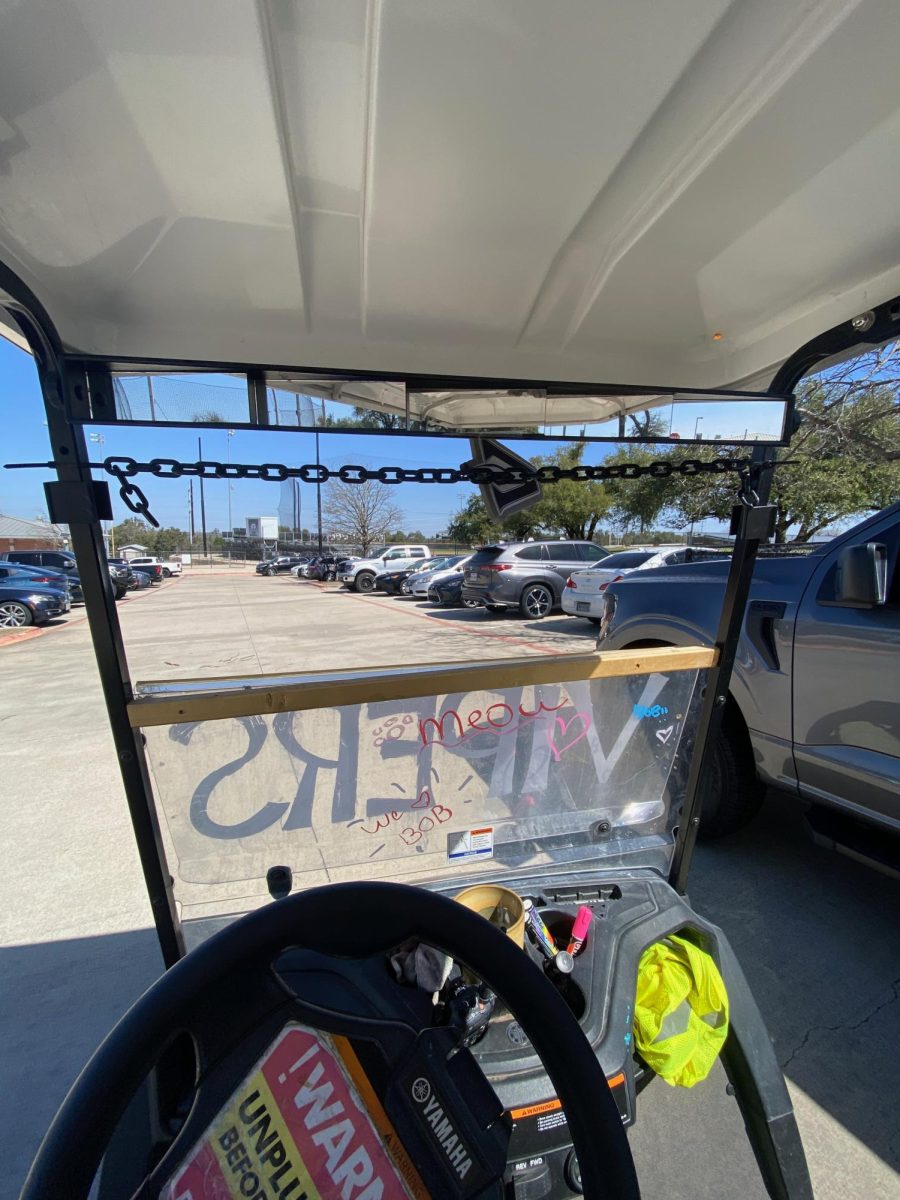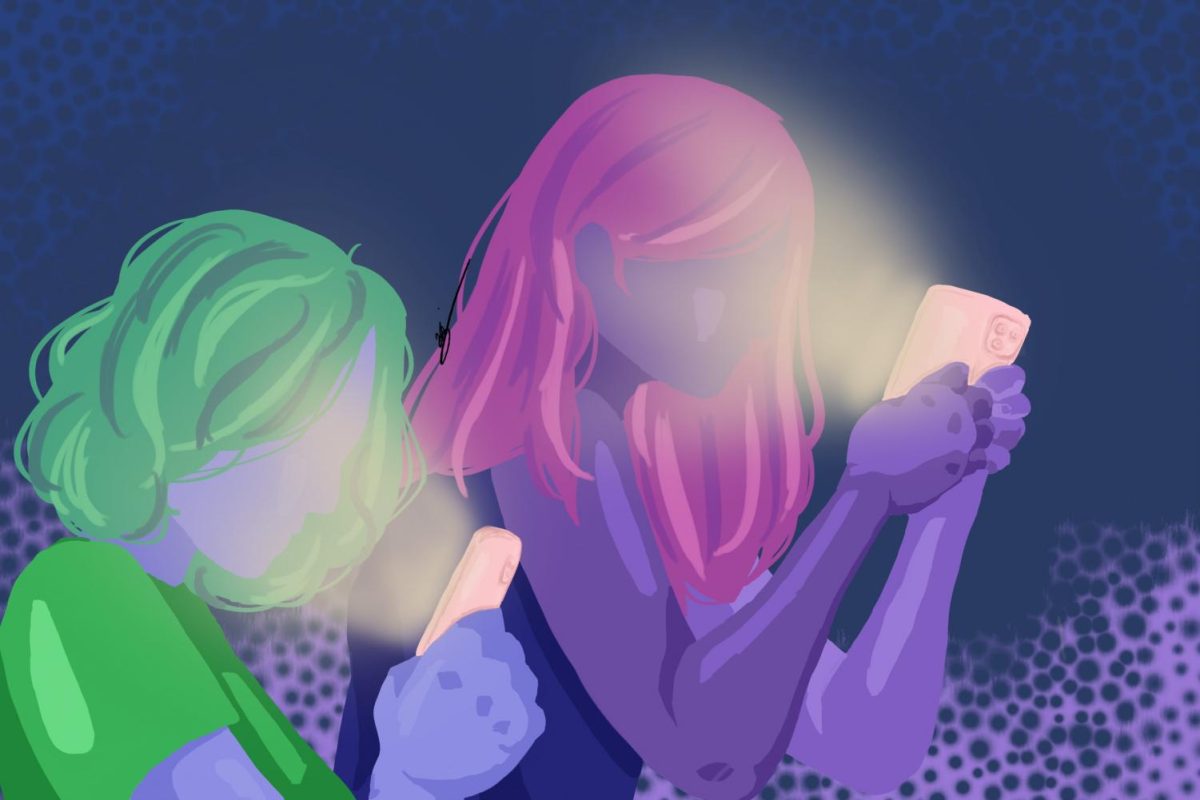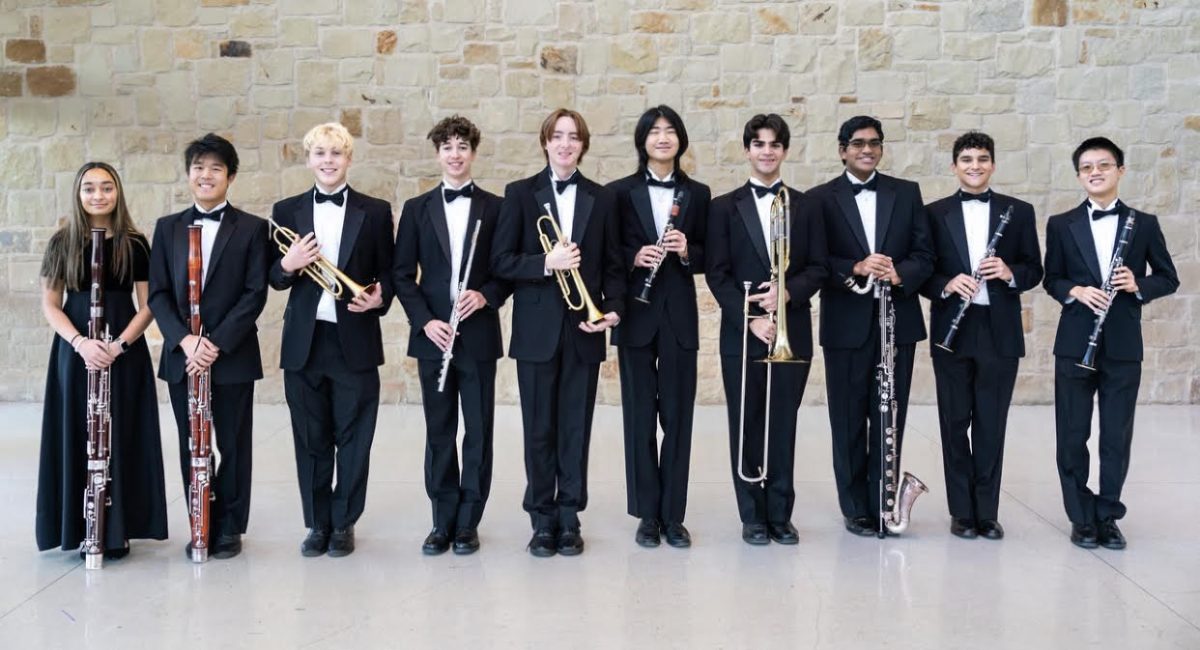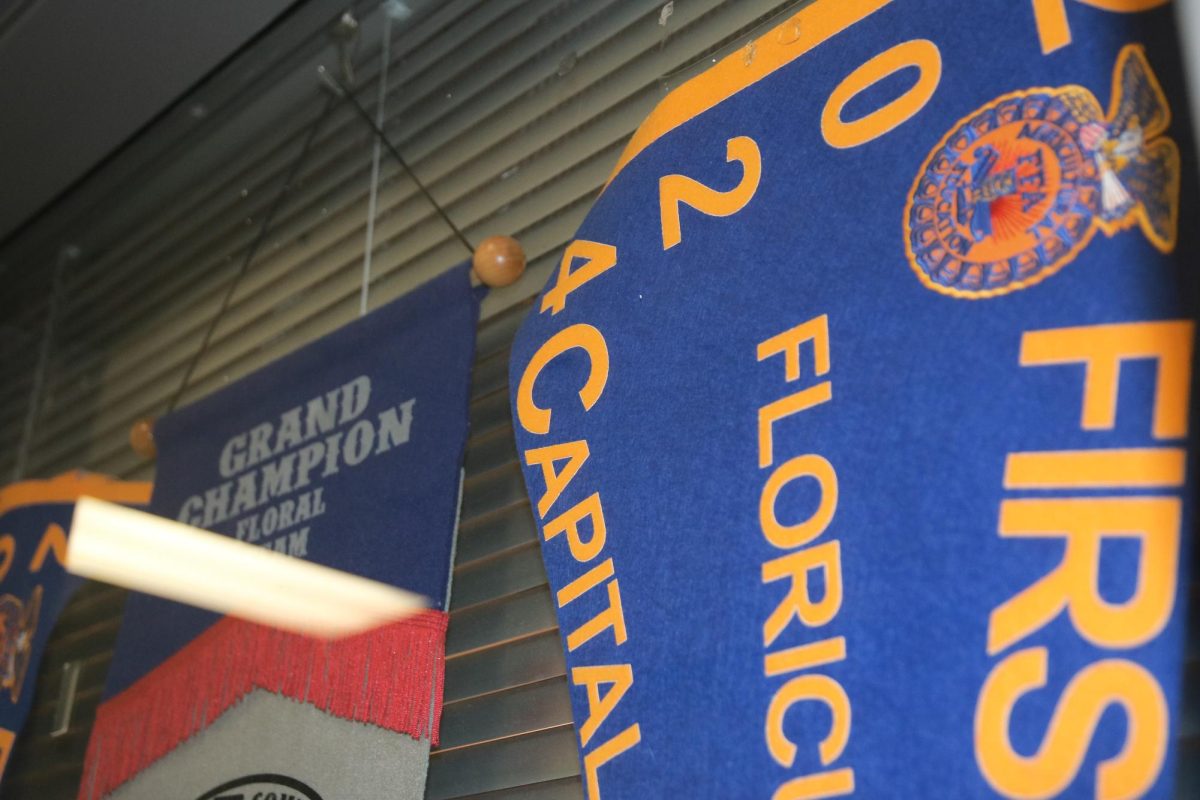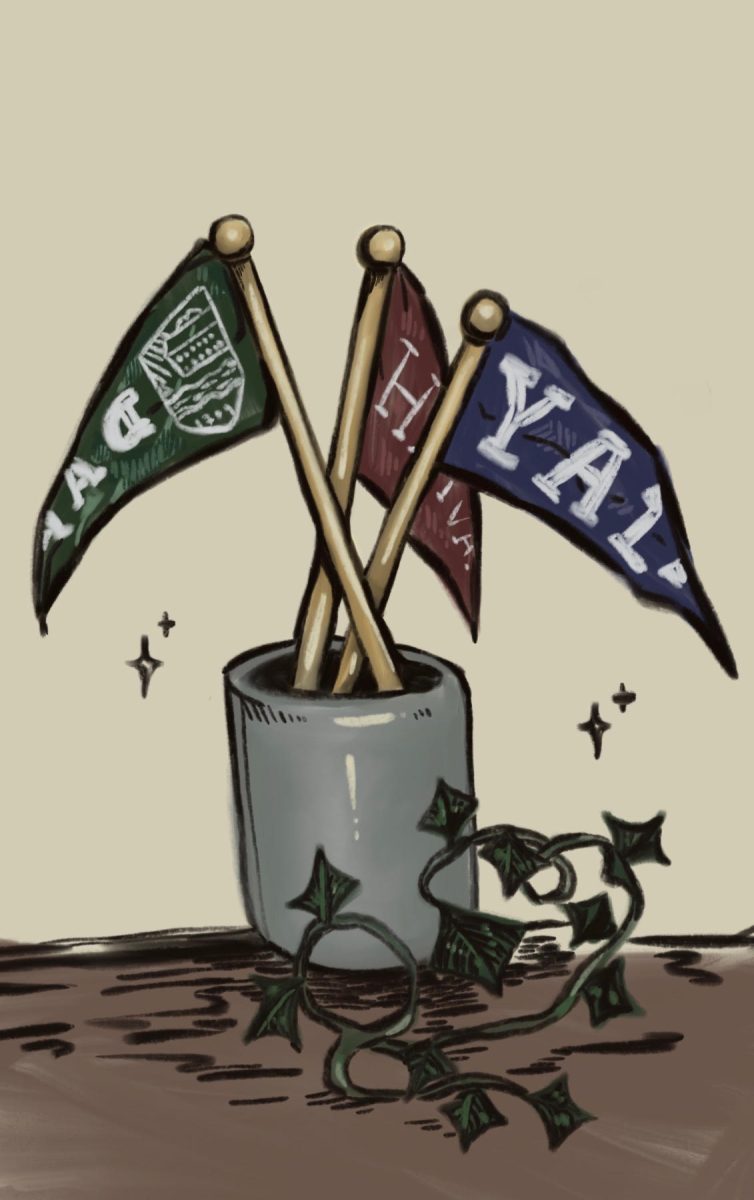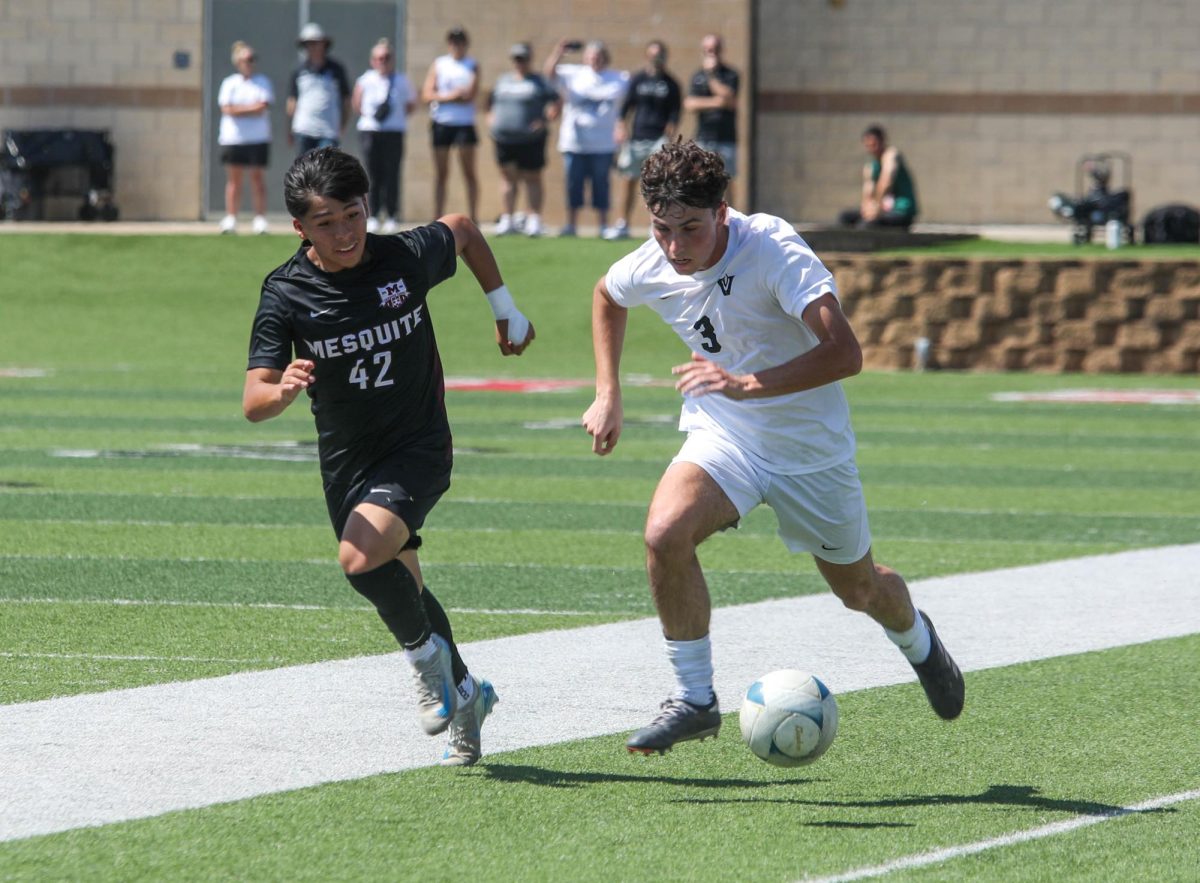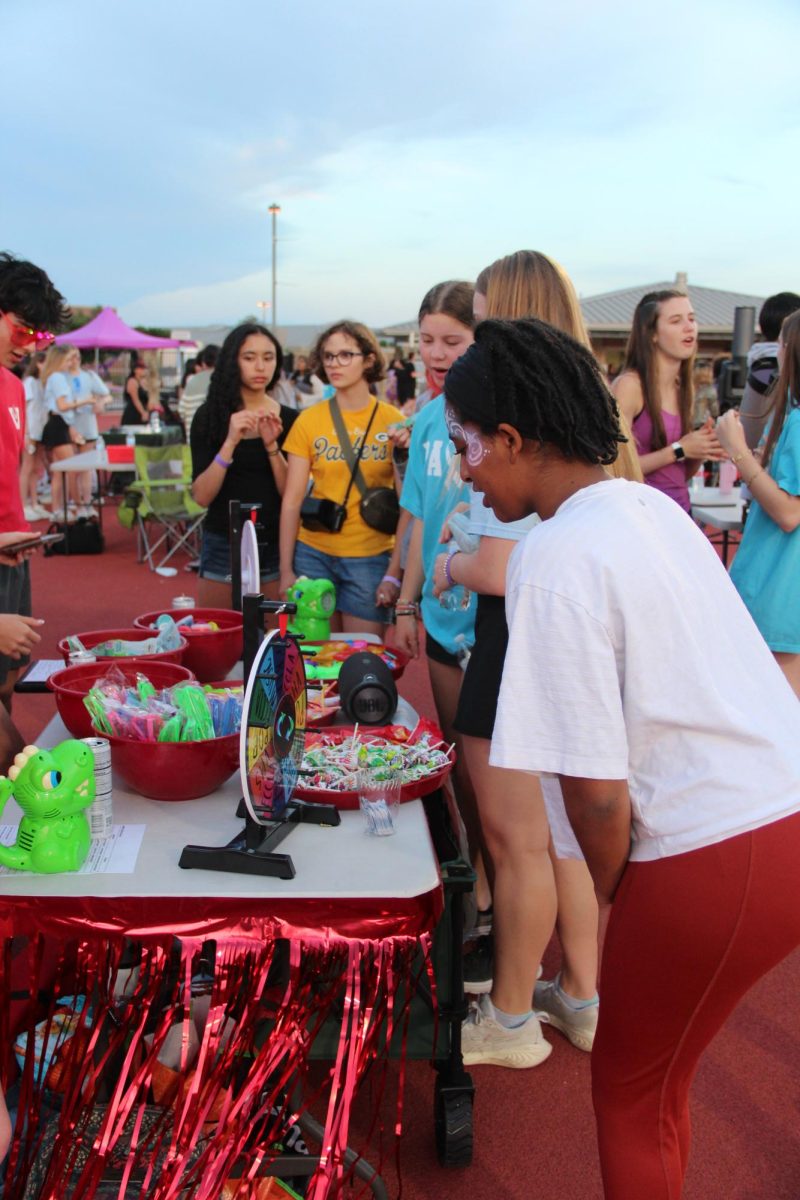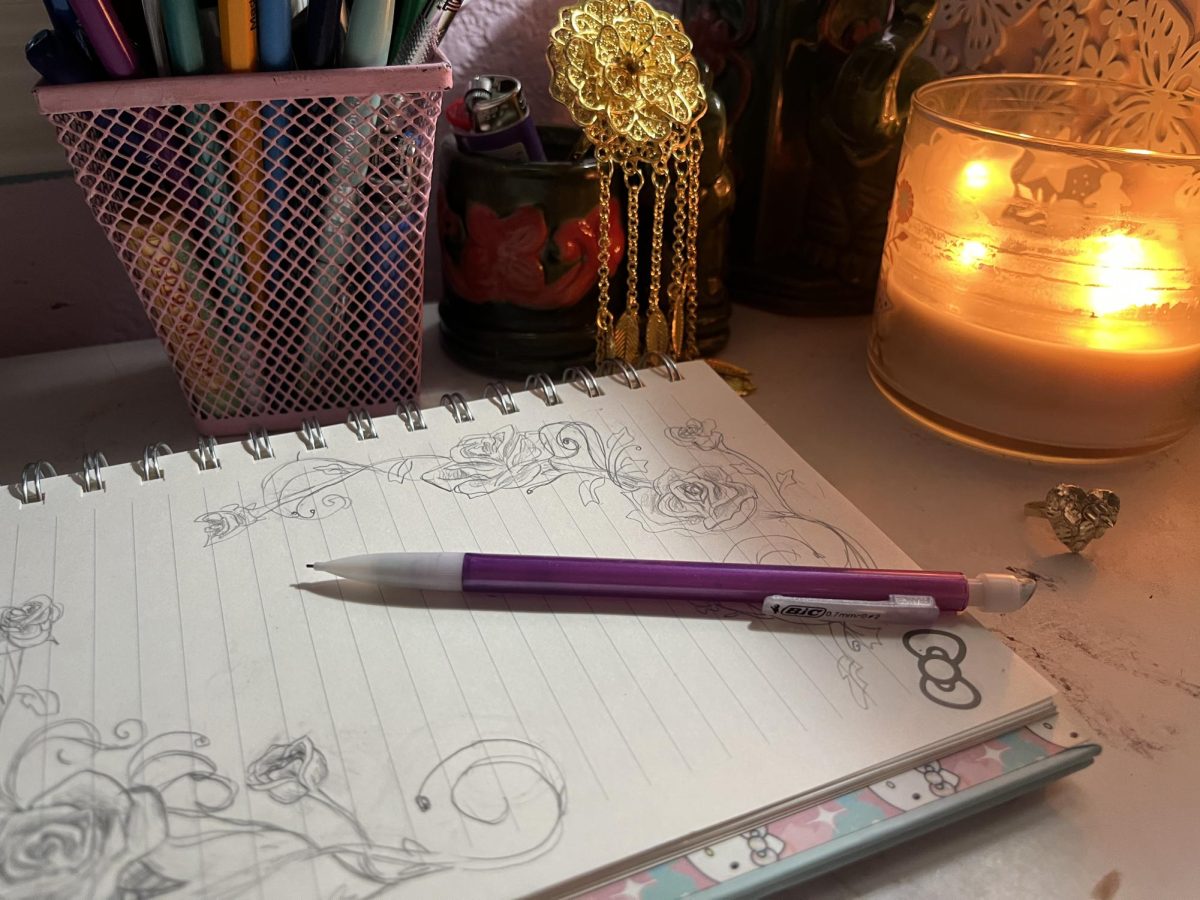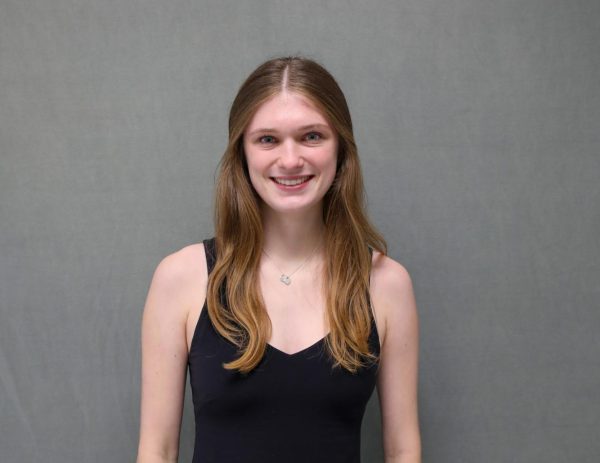A Desi teen stands in front of her closet, studying it intently, attempting to craft an outfit for the upcoming school day. On the one hand, she could wear what all American kids wear: a basic tee and sweats. “Blend into the crowd” seems to be the message echoed in society and throughout social media. A tee-shirt is the safe choice, one that ensures maximum homogeneity, yet something about it feels off. It feels like a betrayal to her South Asian roots. She could wear something more traditional to her culture, but that doesn’t feel completely true to her either, as she has lived in the U.S. her entire life. She flits through her closet, pushing aside various articles of clothing until she finds it, the perfect mix of both sides of her cultural identity: dnabyvi.
Over the past two years, co-founders and juniors Vi Nagaraju and Anvitha Kandula have worked to establish a clothing brand called dnabyvi. The brand, which launched in february, was created with the purpose of closing the gap between Indian and Western culture.
“The idea for the brand stemmed mostly from the experience of feeling too Indian in the States, and then going back to India and feeling too American,” Nagaraju said. “I didn’t feel entirely at home in either place, and after talking to some of my friends and cousins, I realized that they feel the same way.”
Nagaraju combined her passion for fashion and art with her experience living in a largely white/American influenced country in order to connect with her culture and allow others to do so as well.
“I’ve always been super into fashion, and I love designing things, so I wanted a way to share that with other people and allow my voice to be heard,” Nagaraju said.
Their first collection, titled “Pyaar,” meaning love in South Asian languages, features several garment options, including a hoodie, sweatpants and a tote bag. The backside of the products includes the word for love in various regional languages in South Asia, including Hindi, Telugu, Malayalam, Urdu, Sanskrit and Tamil.
“Our designs incorporate both Western and Indian culture,” sophomore Social Media Manager Aish Garapati said. “On our hoodie for example, we have Indian slang and Indian language on it, but the hoodie part of it is basically the western aspect of the design.”
Nagaraju advocates for the importance of staying connected to one’s heritage, especially when living far from the nucleus of that culture, and she believes dnabyvi allows people to do that while normalizing the experience.
“I feel that a lot of [Indian] people who live in a Western country don’t know where they stand,” Garapati said. “So we were thinking, why don’t we mix the two and make the middle our home.”
Nagaraju began the creation process by brainstorming concepts, branding, logos and designs. Then, Nagaraju used Canva and Photoshop to mockup their designs, allowing her to visualize them on a human figure.
“Vi first showed me her designs back when it was just an idea,” Garapati said. “When I saw the designs I was like, ‘Wait, that’s so good.’ There was so much potential in her pieces, so we just had to launch them.”
After designing and producing their product, the team hosted a photoshoot, gathering content to use on their website and social media in order to promote the business and designs. Vi recruited family friends to act as models.
“The actual photoshoot was super fun,’ Nagaraju said. “We had snacks, music and we were all just taking pictures and talking. The environment we created was really nice and judgment free. Everyone had a good time even though it was technically work.”
For Vi, stress levels were high throughout the process of establishing the business, as much of what it entailed was entirely new to her.
“I was up until two or three in the morning some nights, working on something so I could finish it by the deadline I set for myself,” Nagaraju said. “There was definitely a learning curve, as I had to teach myself website design, and had to do a lot of research on materials/supplies, techniques [and more].”
After years of preparation, the team launched their first collection, and has already started preparing for the next. The team aims to grow the number of sales as well as expand their influence to India.
“We don’t have a lot of sales at the moment, so we want to reach a bigger audience, a couple hundred sales a month would be great,” Garapati said. “My personal goal, which is pretty far reaching, is for celebrities in India to wear our products.”
Rather than focusing their efforts on maximizing revenue, Nagaraju’s main goal is bringing people together on the basis of culture.
“I want this brand to be a reflection of the fusion of Desi and American Culture, and to normalize that feeling,” Nagaraju said. “I want to create a way that the South Asian diaspora can feel connected to their culture and each other through what they wear.”


